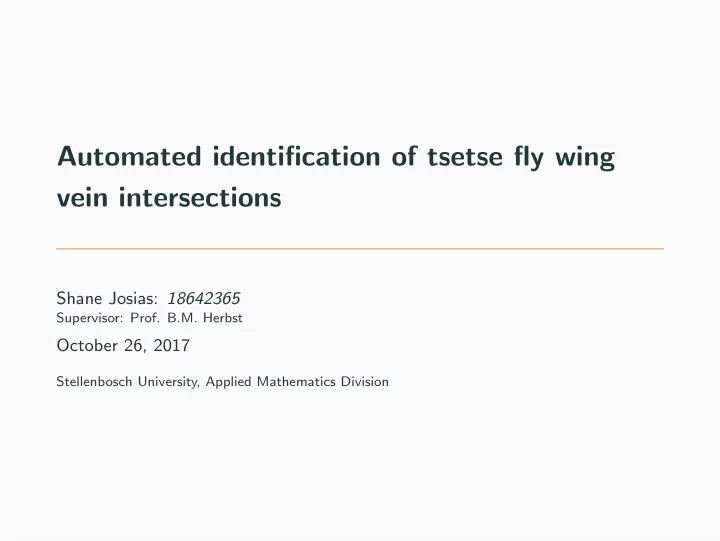

Automated identification of tsetse fly wing vein intersections Shane Josias: 18642365 Supervisor: Prof. B.M. Herbst October 26, 2017 Stellenbosch University, Applied Mathematics Division
Goals Fly wing morphometry provides insight in tsetse population genetics, which can be used for large scale studies of population genetics. This aids in the management of tsetse fly populations. Reasons • 400 000 Fly wings that are useful for research. • Problem: It is impossible to mark all the images by hand. Task • Automate the process of marking fly wing images. Figure 1: Fly Wing 1
Methodology: Two tiered Tier 1: • Identify regions likely to contain an intersection. • Deep Learning. Tier 2: • Use image processing to pinpoint the location of an intersection. • Involves preprocessing and feature extraction. 2
Training Data: • 90486 annotated samples ( 1 3 intersections, 1 3 veins, 1 3 blank spaces). • Split into training (50%), validation (25%) and testing (25%) set. Network Architecture: • 2 Convolutional layers with 64 and 32 3x3 filters respectively. • Max pooling layer separates convolutional layer. • Fully connected layer with dropout. • Output layer with softmax (sigmoid). 3
Deep Learning Results Figure 2: Regions of intersections as identified by the CNN 4
Feature Extraction: Harris corner detection results 5
Recommend
More recommend